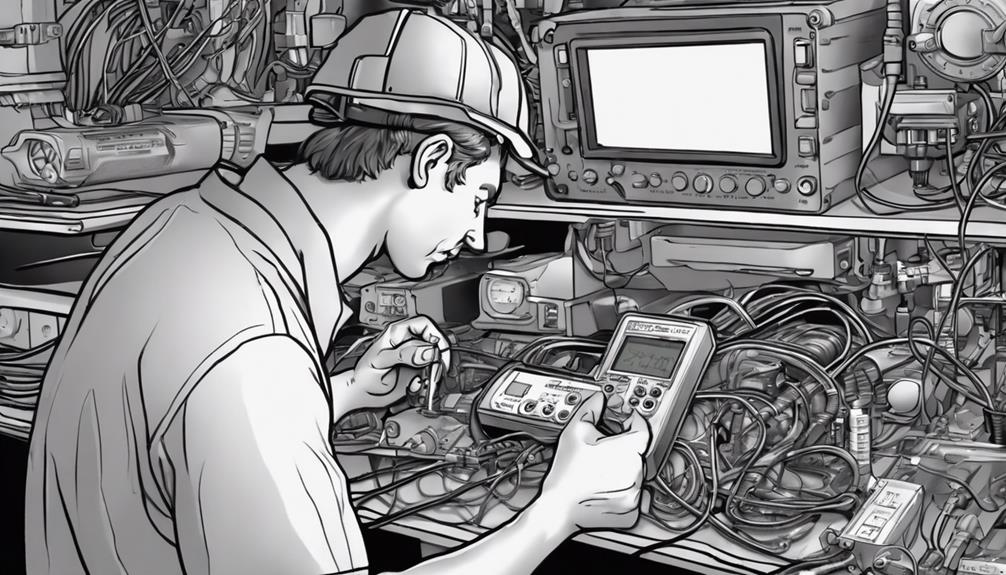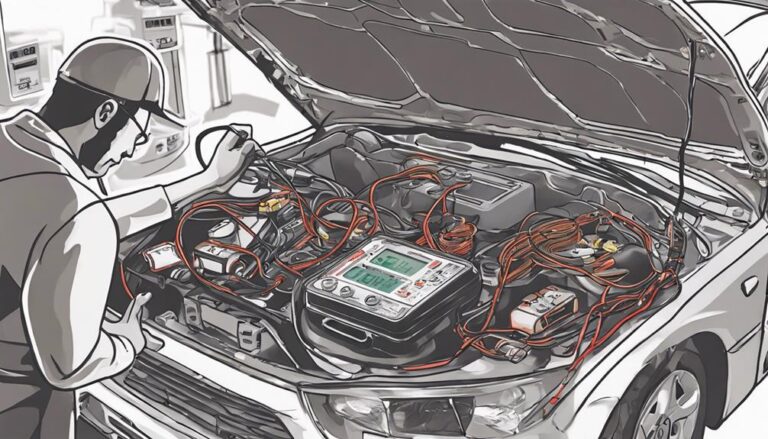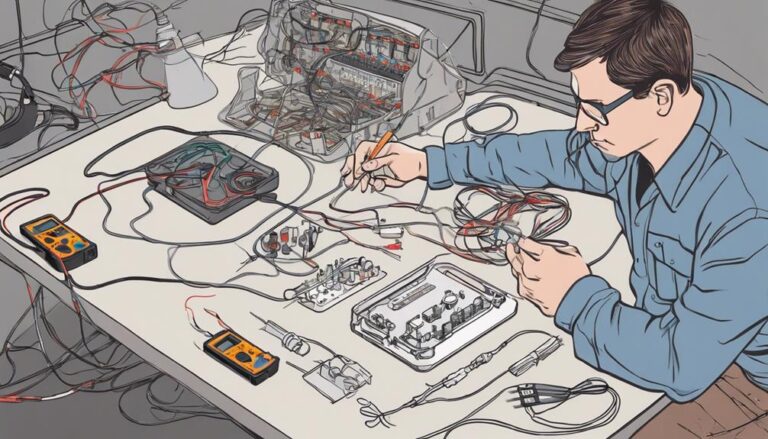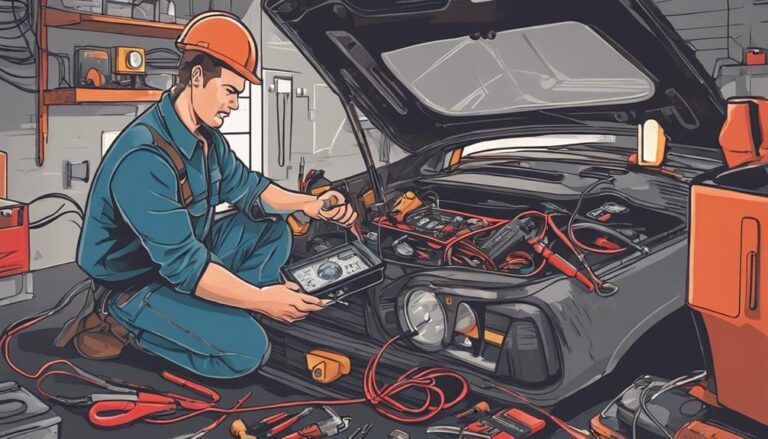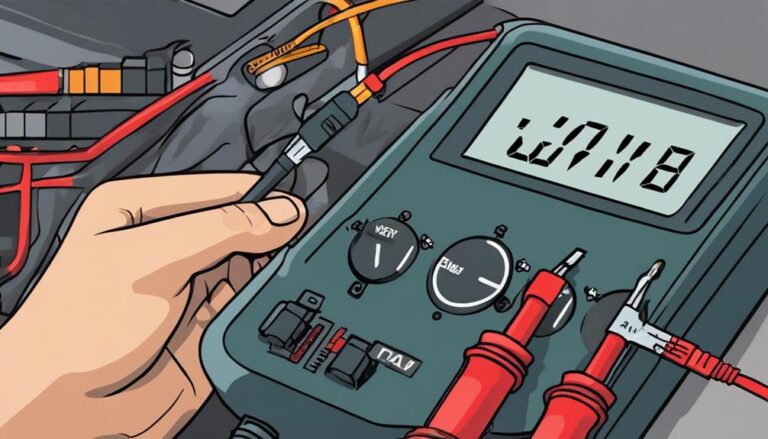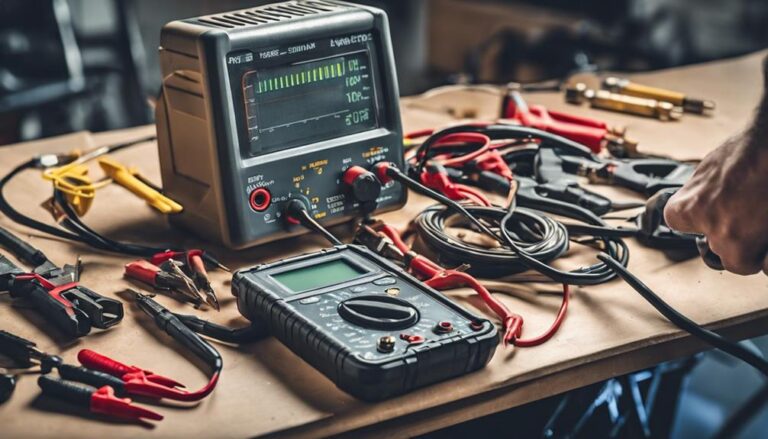Mastering Car Electrical System Diagnostics: A Guide
If you've ever found yourself puzzled by the mysterious workings of your car's electrical system, Tracy Martin's guide is the beacon of clarity you need.
From unraveling the complexities of voltage and amperage to pinpointing elusive circuit problems, this book is a treasure trove of knowledge for anyone seeking to demystify car electrical diagnostics.
As you explore the intricacies of troubleshooting common issues and mastering essential techniques, you'll uncover a wealth of practical insights that can elevate your understanding of automotive electrical systems.
Key Takeaways
- Understand voltage, amperage, and Ohm's Law for effective car electrical diagnostics.
- Analyze circuit components and voltage drops to pinpoint issues accurately.
- Utilize precise voltmeter techniques to identify resistance areas and faults efficiently.
- Differentiate between series and parallel circuits in cars for targeted problem-solving.
Understanding Voltage and Amperage Fundamentals
To comprehend the intricacies of a car's electrical system, you must grasp the fundamental concepts of voltage and amperage. Voltage, measured in volts, represents the electrical pressure within a circuit. It's crucial to understand as it determines how much force is pushing the electrical current through the system.
Amperage, measured in amperes, signifies the amount of electrical current flowing through the circuit. This measurement is vital for assessing power consumption and ensuring the components are operating within their designed limits.
When dealing with car electrical systems, you often encounter electrical resistance calculations and Ohm's Law applications. Electrical resistance calculations help determine how much a component restricts the flow of current, affecting overall system performance.
Ohm's Law, which states that voltage equals current multiplied by resistance, is a fundamental principle used in diagnosing and troubleshooting electrical issues in automotive circuits. Mastering these concepts is essential for accurately assessing and resolving electrical problems in vehicles.
Analyzing Circuits for Troubleshooting
Understanding how to analyze circuits is essential for pinpointing and resolving electrical issues in a car's system. To effectively troubleshoot circuits, consider the following:
- Voltage Drop: Investigate voltage changes across components to identify areas of high resistance or poor connectivity.
- Ground Connections: Check for secure and clean grounds as faulty connections can disrupt the circuit's flow.
- Recognizing Components: Familiarize yourself with components in a series circuit to isolate potential points of failure.
- Short Circuits: Be mindful of short circuits that can affect amperage, blow fuses, and disrupt the circuit's functionality.
Proper Use of Voltmeters in Diagnosis
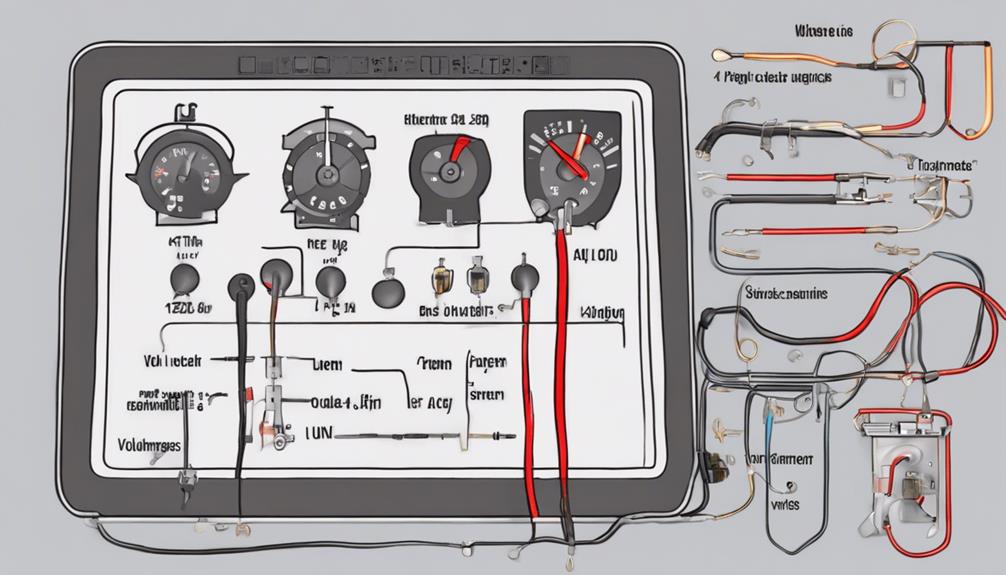
For precise diagnosis of car electrical issues, ensure voltmeters are used correctly by connecting the probes accurately to the circuit being tested. When using a voltmeter, understanding voltage drop and applying Ohm's Law is crucial.
Voltage drop refers to the decrease in voltage as current flows through a circuit due to resistance. By measuring voltage at different points in a circuit, you can pinpoint high resistance areas causing voltage drops, indicating potential issues. Applying Ohm's Law (V = I x R) allows you to calculate expected voltage values based on current and resistance, aiding in comparing theoretical values to actual measurements.
Proper use of voltmeters aids in identifying faults like low power supply, faulty connections, or damaged components. Accurate readings enable you to diagnose car electrical system problems effectively and efficiently. Remember, precise probe placement and understanding voltage characteristics are key to successful diagnostics.
Identifying and Addressing Short Circuits
Identify and address short circuits by measuring voltage drops across components to locate unintended connections causing excessive current flow. Short circuit locations and troubleshooting techniques are crucial in swiftly resolving electrical issues in your vehicle. Here are key points to consider:
- Visual Inspection: Begin by visually inspecting the wiring and components for any visible signs of damage or melted insulation, which could indicate a short circuit.
- Continuity Testing: Use a multimeter to check for continuity in the circuit, helping to identify the presence of a short circuit.
- Isolating Sections: By isolating different sections of the circuit and testing them individually, you can narrow down the location of the short circuit.
- Proactive Measures: Regularly inspect and maintain your vehicle's electrical system to prevent common causes of short circuits, such as frayed wiring, loose connections, or water ingress.
Taking these steps won't only help in troubleshooting short circuits effectively but also in preventing potential hazards and costly damages to your car's electrical system.
Principles of Series and Parallel Circuits
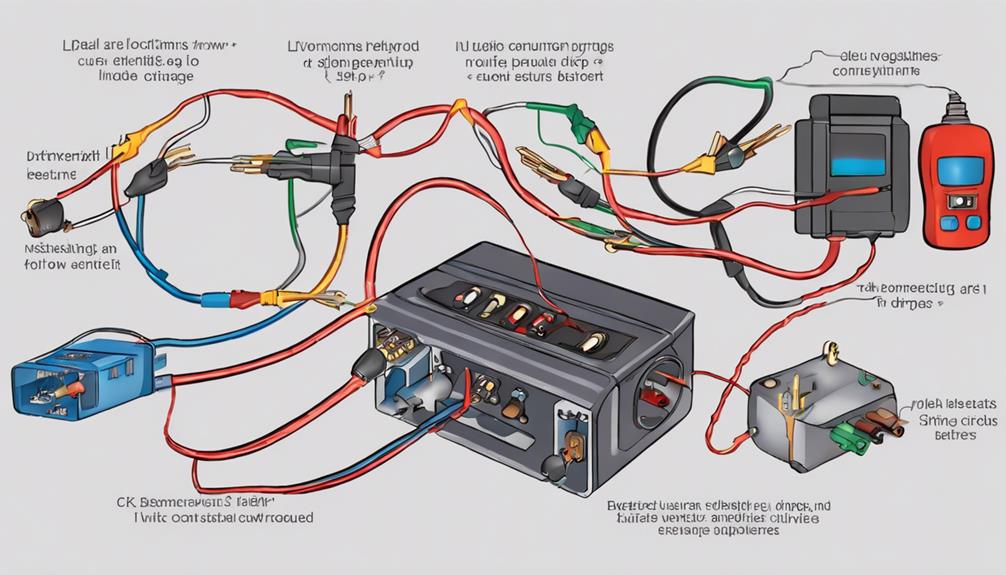
To comprehend the functionality of complex car electrical systems, grasp the foundational principles governing series and parallel circuits. Circuit design plays a crucial role in determining how electrical connections are established within a vehicle.
In a series circuit, components are arranged sequentially, creating a single pathway for current flow. Voltage in this setup is distributed among the components, with the total voltage equaling the sum of individual voltage drops. It's important to note that if one component fails in a series circuit, the entire circuit is impacted, potentially leading to a halt in current flow.
On the other hand, parallel circuits offer multiple paths for current flow, allowing components to function independently. In such circuits, the voltage across each component remains the same, while the current is divided based on the resistance of each path.
Understanding these fundamental principles of series and parallel circuits is essential for diagnosing and troubleshooting car electrical systems efficiently. By mastering these concepts, you gain a deeper insight into how electrical components interact within the vehicle's overall circuitry.
Frequently Asked Questions
How Do I Find Out What Electrical Problems My Car Has?
To identify issues with your car's electrical system, start by speaking to gather info. Use diagnostic tools like multimeters for troubleshooting. Inspect for visible damage and perform tests for resistance, continuity, and voltage.
How Do You Run an Electrical Diagnostic on a Car?
To run an electrical diagnostic on a car, start by inspecting wiring for damage. Then, perform voltage testing and circuit tracing. Follow up with component testing to pinpoint faults accurately. Remember, thorough investigation leads to precise solutions.
How Do You Trace Electrical Problems in a Car?
To trace electrical problems in a car, start with a voltage drop test to pinpoint power issues. Then, inspect wiring thoroughly for any signs of damage or wear. Combining these steps will help you identify and resolve electrical faults efficiently.
How Much Does It Cost to Diagnose Electrical Problems in a Car?
Estimating the cost to diagnose car electrical issues varies. Professional services range from $100 to $200. Fees cover skilled labor, equipment usage, and expertise. Some shops offer free checks. Advanced tools may incur higher costs.
Conclusion
Now that you have mastered the fundamentals of car electrical system diagnostics, you're equipped with the knowledge and skills to tackle any issue that comes your way. Remember, practice makes perfect, so don't be afraid to roll up your sleeves and get your hands dirty.
In the world of automotive repair, knowledge is power, and with the information you have absorbed, you're well on your way to becoming a true electrical system expert.
So go forth and conquer the road ahead!

